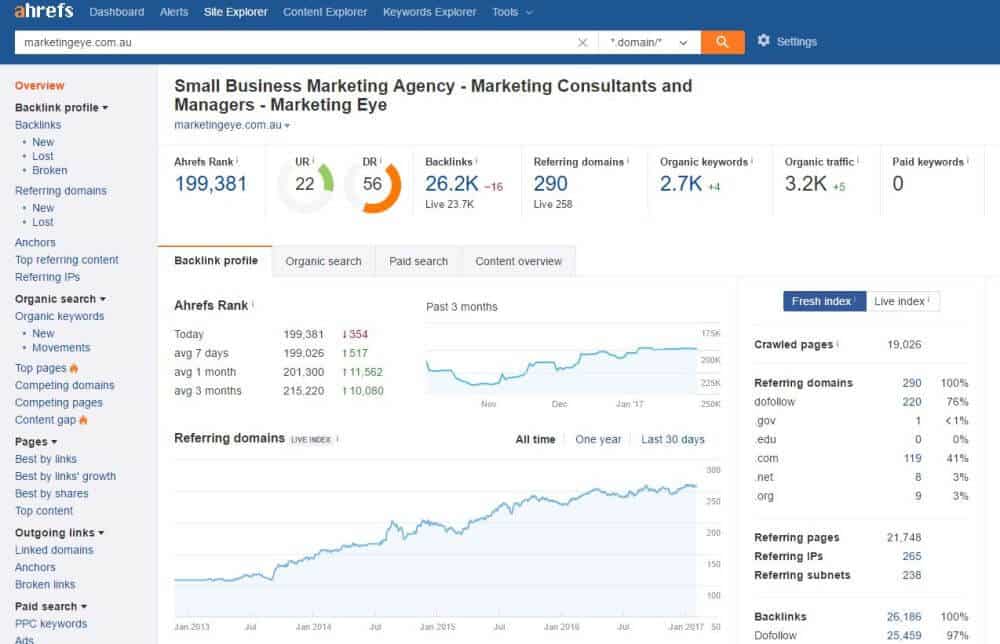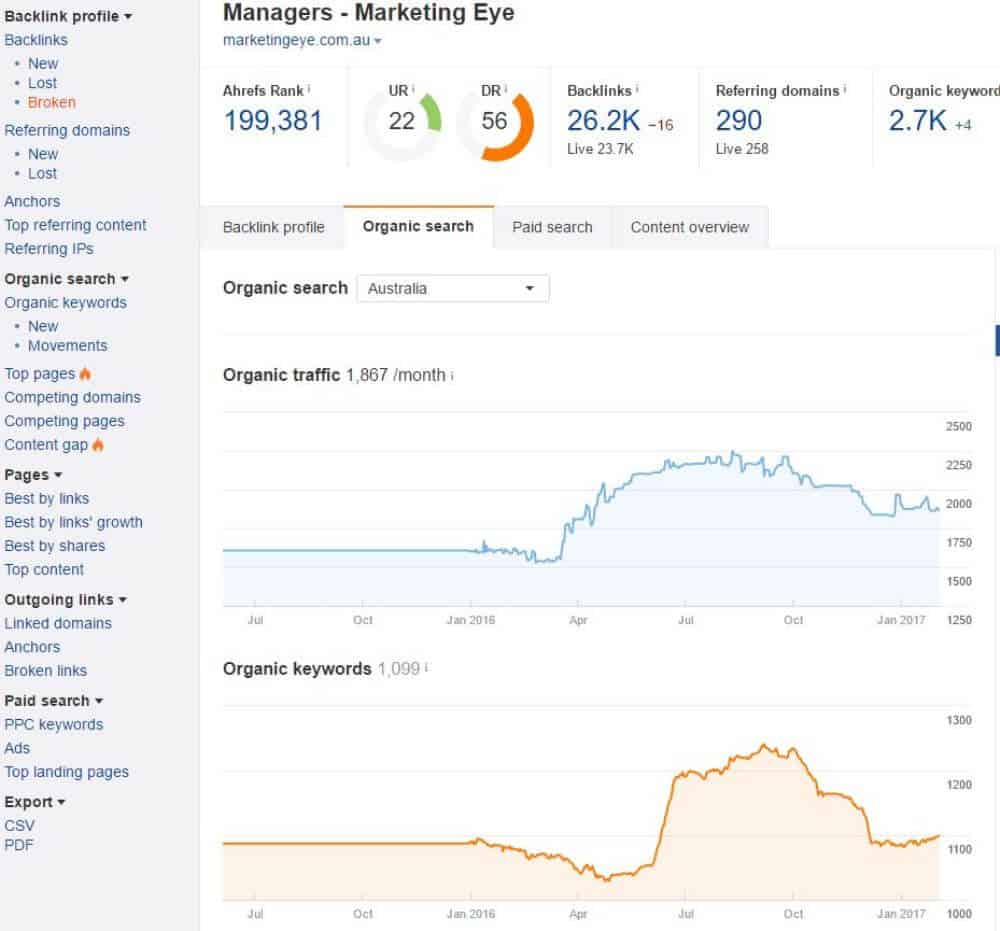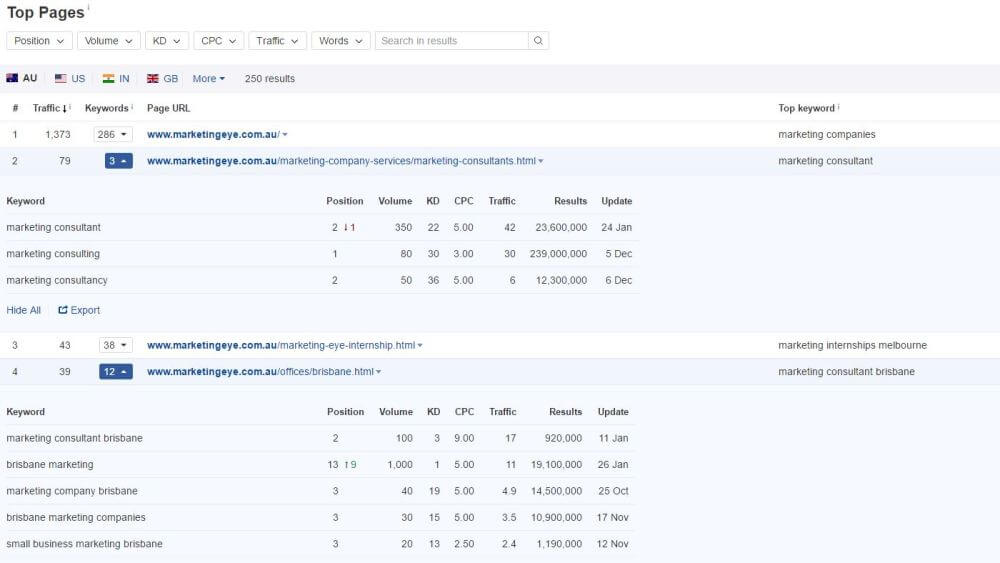Do you look at your competitor websites?
At NoBull, we believe competitor comparison is essential – you need to know what you’re up against. That’s why we include it in all our website audits. But you don’t need a full-scale third party audit to get some insights.
Just set aside an hour or two to check our your direct competitors’ online presence – then review your own as well.
None of your competitor’s websites will be perfect, but they will all give you ideas. Ideas for things you could do. Ideas for things to avoid. Some help in deciding whether you need a complete site redesign and redevelopment, or if maybe you can get away with a revamp. Not that there’s anything wrong with a great new website, but it can cost a lot and take up a lot of energy, attention and time. So if you’re better than the competition already, you may get more value investing those resources elsewhere.
To help you get as much value as possible from the exercise, here’s a checklist of areas to consider.
What to include in a basic review of competitor websites
1. Design, layout and navigation
This is where most people start. It’s also where many people stop, which is a shame.
Some questions to ask:
- Which sites look good? What makes them look good? Clean design, white space, good use of images, a legible font, consistent colours or branding…
- How easy is it to find specific information? Think about what a potential client would want to know when they first visit a website. Can you tell from the home page what the business does? Can you find a list of services? Contact details? Company history or information? Areas they service? Current or past clients?
2. Content
Content is central to any website. It’s the reason visitors are there.
The first job of website content
First and foremost, your site must make visitors interested – so they stay! The commonest ways to do that are to inform, educate, entertain and/or inspire. Which of those options are your competitors using on their sites? Which are you using?
 There’s a lot of talk at the moment about video – and it’s certainly true that video engages. Are your competitors using it? Are you?
There’s a lot of talk at the moment about video – and it’s certainly true that video engages. Are your competitors using it? Are you?
What about other content formats? Audio such as podcasts. Infographics. Templates and checklists. Webinars. White papers. Slideshows. Charts and diagrams. Before and after images. Of course it depends on your industry which ones are most relevant, but it’s certainly worth checking what the competition are doing.
In one market where we did a recent audit, audio and video were popularly used, but there was actually very little in the way of other more established capabilities such as regular blogs. That was surprising as usually blogs come first, but it gave us some ideas on what the client could do next.
The second job of website content
Once visitors are staying on your site, the next task is to generate leads and customers. Factors to look at here include:
- Social proof. This is content which shows that others trust and like the website owner. That could be case studies, social media likes and shares, testimonials, even positive comments on blog posts.
- Ease of contact. Are there contact details visible on every page? Is the contact page easy to find? Does it include phone and email as well as a form? What about location and hours? And can visitors subscribe to stay in touch, even if they’re not ready to have a conversation just yet?
- Premium content. This is content you offer in exchange for an email address. It’s often a white paper, a how-to-guide, or a template or interactive tool, like our DIY website analysis tool.
In the audit we mentioned above, all the sites had an invitation to subscribe to a newsletter invitation, but only one of the six we reviewed offered premium content in exchange. So only one site in 6 was incentivising people to provide emails – even though email newsletters are one of the best ways to generate leads and enquiries. Once again, it was an obvious way our client could step ahead of the competition.
3. Functionality
What can visitors do on your site or on your competitors’ sites?
- Can they book an appointment?
- Can they register for events or webinars? (And if there’s a cost, can they pay online?)
- Is there any option to purchase online? (If you offer standard services, this can be a great way to get payment or deposits upfront!)
- Can they request a quotation?
- Can they determine what service they need? (One of the sites we reviewed in that audit had a great interactive tool to assess which service was most appropriate for specific situations.)
All of the above involve some interaction. Your website delivers value. It helps visitors take the next step towards working with you.
Once again, not all of these options are suitable for all industries or businesses, but they may give you some ideas.
4. Technical Performance
Some simple things to consider here:
- How fast does the site load? You can tell by looking at it whether it feels slow, or you can run a speed test for more detailed results.
- Is the site mobile-friendly? Test it on your phone.
- Is the site missing content or full of broken links?
- Does everything on the site work? There’s no point in a fancy cost estimator or an appointment booking system if it doesn’t work. We’ve even seen contact forms which didn’t submit!!!
You’ll find you can assess these just by visiting your competitors’ sites – any issues will leap out at you.
So by now, you should have a fair idea of how your site looks against the competition. But that still doesn’t tell you how your website performs relative to them. Who’s getting the most leads, enquiries or appointments?
Unfortunately, there’s no way to know for sure, but there are some things you can do to get an idea how you’re doing.
Assessing competitor website performance
At this point, you usually have to sign up to paid services – although most of them offer some kind of free trial. If you’re doing a one-off audit, that may be enough for you. If you want to track the effect of changes and how you perform over time, you may need more.
First of all, find out who’s getting how much traffic.
Sign up to Alexa or ahrefs (both offer a free trial) and you’ll be able to check your ranking and your competitors’ rankings. Alexa is possibly better known, but personally, I prefer ahrefs. It’s based out of Singapore and seems less US-focussed. The screenshots I’ve used are from ahrefs – referencing one of our competitor websites, Marketing Eye. They’re far more established and bigger, so they have better data for these examples.
Remember, the rankings are global rankings and there are nearly a billion websites, so don’t expect a high number! It’s more important to ask:
- Where do I rank relative to my competitors? Am I higher or lower?
- Is my rank improving over time? What about my competitors?
You may find that the whizz-bang slick site you were so impressed with doesn’t actually rank that well. Of course, you still don’t know why – it could be the site’s bad, or it could be lack of promotion – but at least you have an idea who’s most likely to be getting leads online.
Now look at whose traffic is increasing or decreasing
The second tab in the ahrefs Site Explorer tool shows you organic traffic. That’s traffic from search engines. You can see here that Marketing Eye’s organic traffic rose, then dropped. (To be strictly accurate, it’s the ahrefs estimate of their traffic, but it’s as good as you’re going to get without industrial espionage!) Also that there is a clear relation to the number of keywords they rank for. Looks like the competition for market consultant keywords may be getting tougher – and they’re not keeping up!
Obviously sites with growing visitor numbers tend to be doing something right. So this gives you some idea which ones to focus on.
Now find out which pages and topics are most popular
Why?
This gives you ideas on what you could do to improve your website.
At this point, you’re not so much interested in how your traffic volumes compare to competitors. You’re interested in which pages on their site are most popular – especially information, resources and blog pages. Because that shows what their visitors are most interested in, which gives you ideas what might work on your site.
The results might not be what you expect. In our audit, we found the pages with audio content were much more popular than those with video. Not what you’d expect considering all the hype about video, so a great insight.
It’s best to look at top pages for several competitors and try to spot themes, rather than compete with individual pages head-on.
Finally, check out what’s driving traffic
With ahrefs, you can check top keywords on a page-by-page basis. Here’s a couple of examples from Marketing Eye.
Notice the terms for the Brisbane office page. These are all searches relating to marketing services in Brisbane. Do you think a single page with all office locations would have ranked for those terms? Unlikely. Great decision to go with a separate page per office. (If you’ve got multiple locations and don’t have multiple pages for them, that’s an easy change to make on your site!)
You can also see which pages have the most backlinks. (That’s links from other web pages, which generate what Google Analytics calls ‘referral traffic’.)
Lots of links suggests a topic with lots of interest, so one it’s worth considering for your own site.
Even better, since you can see which sites and pages are linking to your competitors, you get some ideas who you might be able to approach. There’s often good synergy with companies overseas or in cities or regions you don’t service. Links can help both sites show up better in search, but there’s no direct competition.
You can see there’s a lot to learn from reviewing competitor websites.
After all, the most important thing is not to be perfect – no business ever is – but to be better than the competition. Knowing what the competition is doing is great. Knowing what’s working for them is even better.
So log on and look at those competitor websites today! Or if you don’t have the time and inclination to do it all yourself, ask about a NoBull website audit. Check out this audit report for an idea of what you’d get.







